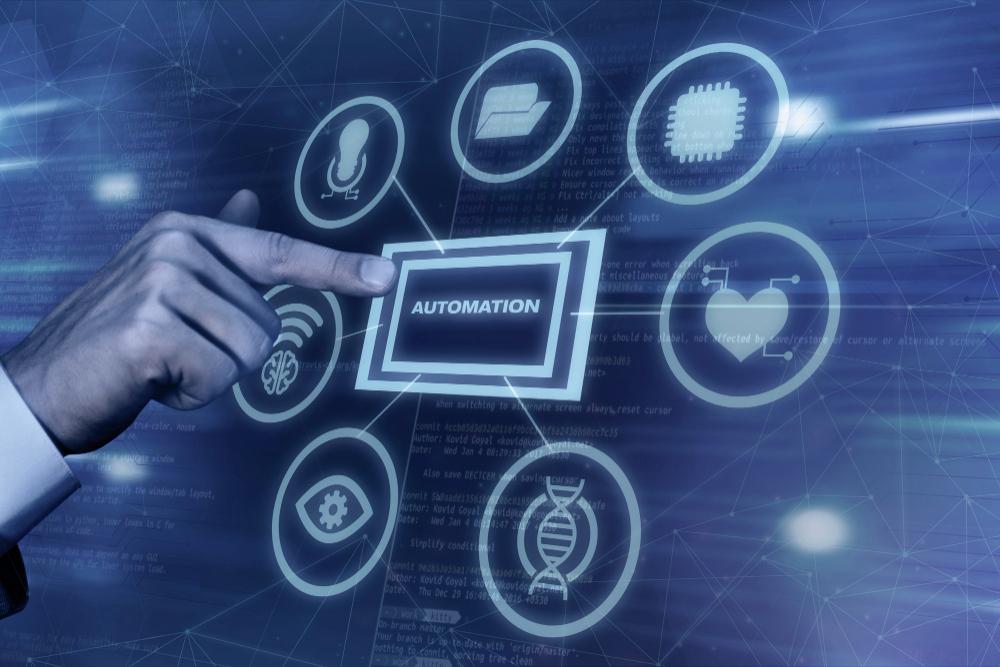Menu
In today’s rapidly evolving business landscape, organizations are constantly seeking ways to improve efficiency, reduce costs, and enhance productivity. Robotic Process Automation (RPA) has emerged as a game-changing technology, automating repetitive tasks, reducing errors, and allowing human workers to focus on more value-added activities. However, the integration of Artificial Intelligence (AI) with RPA is taking automation to a whole new level.

Robotic Process Automation is a technology that uses software robots, or “bots,” to automate rule-based tasks. These tasks often involve data entry, data extraction, and other repetitive processes that are time-consuming and error-prone when performed by humans. RPA has been widely adopted across industries, such as finance, healthcare, and manufacturing, to streamline operations and improve efficiency.
However, traditional RPA systems have limitations. They are typically designed to follow predefined rules and cannot handle tasks that require cognitive abilities like decision-making, natural language understanding, or adaptability to changing circumstances. This is where AI steps in to enhance Robotic Process Automation capabilities.
Artificial Intelligence complements RPA in several key ways:
Cognitive Automation: AI brings cognitive abilities to RPA bots. Machine Learning (ML) algorithms allow bots to learn from historical data and make decisions based on patterns, making them more adaptable and capable of handling complex tasks. This is particularly valuable in scenarios where decisions need to be made based on data analysis.
Natural Language Processing (NLP): AI-powered RPA systems can understand and interact with human language, enabling them to process unstructured data, such as emails, customer queries, or social media comments. This capability is vital for tasks like customer support, where responses need to be contextually relevant.
Predictive Analytics: AI can analyze historical data to make predictions about future events or trends. When integrated with RPA, this allows for better resource allocation, demand forecasting, and decision-making, as bots can provide insights based on data analysis.
Automation of Complex Processes: While traditional RPA excels at automating repetitive tasks, AI can handle more intricate and dynamic processes. By combining RPA’s rule-based automation with AI’s ability to adapt to changing conditions, organizations can automate end-to-end processes that involve both structured and unstructured data.
Enhanced Customer Experience: AI-powered RPA can improve customer interactions by providing personalized recommendations, answering queries in real-time, and resolving issues efficiently. This leads to a better customer experience and increased customer satisfaction.
The integration of AI and RPA has a significant impact on various industries:
Banking and Finance: AI-enhanced RPA is used for fraud detection, risk assessment, and customer onboarding processes. Bots can analyze vast datasets, detect anomalies, and make real-time decisions to protect financial institutions and their customers.
Healthcare: AI-powered RPA streamlines administrative tasks, such as claims processing and appointment scheduling. Additionally, it assists in medical data analysis, helping healthcare providers make more accurate diagnoses and treatment recommendations.
Manufacturing: AI-driven RPA optimizes supply chain management by predicting demand, managing inventory, and automating quality control processes.
Customer Service: AI and RPA combine to create chatbots and virtual assistants that provide 24/7 support to customers. These bots can understand and respond to customer inquiries, reducing response times and increasing customer satisfaction.
While the integration of AI and RPA offers significant benefits, organizations must also consider some challenges:
Data Quality: AI relies heavily on data, so ensuring data accuracy and quality is crucial. Garbage in, garbage out—poor data can lead to erroneous AI-driven decisions.
Security and Compliance: Handling sensitive data with AI and RPA requires robust security measures and compliance with regulations like GDPR and HIPAA.
Change Management: Implementing AI-enhanced RPA may require cultural changes within organizations, including retraining employees and addressing resistance to automation.
As AI technology continues to evolve, its role in enhancing RPA will only become more pivotal, enabling businesses to stay competitive and thrive in a fast-paced digital world.
The synergy between Artificial Intelligence and Robotic Process Automation is transforming the business landscape. By combining RPA’s efficiency and task automation capabilities with AI’s cognitive and decision-making abilities, organizations can achieve higher levels of automation, improve customer experiences, and make data-driven decisions.
Copyright 2024 | All rights reserved.
Disclaimer: “All trademarks used are the property of their respective owners, and their use here does not imply endorsement.”